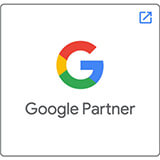Microsoft Ad Network – Irrelevant Clicks & Bots from “Syndicated Search Partner” Network

About this time last year, Microsoft modified its ad distribution options with the intention of increasing advertising display volume. However, Microsoft Ad Network is requiring your ads to appear on the websites of their “Syndicated Search Partners.” Those partners are providing irrelevant clicks and bots.
You are required to either fully, or partially, opt-in to the advertising network, including Syndicated Search Partners. No longer can you just advertise on the specific websites, such as Bing.
Advertisers are getting more traffic. Microsoft claims they will deliver conversion rates on par with Bing, Yahoo, AOL, and DuckDuckGo. However, as we have seen first-hand, that traffic is less relevant due to the low-quality websites of their Syndicated Search Partners.
The Issue: The Microsoft Ad “Syndicated Search Partners”
Microsoft Search Ads states that you can reach potential customers who are actively searching for your products and services. These ads can appear with search results on sites like Microsoft Bing, AOL, Yahoo, DuckDuckGo, Ecosia, and other partners.
Sounds good so far, but who are these “other partners”?
The “other partners” are the crux of the issue. Microsoft does not define what these websites are, where your ad will appear. They don’t even list some examples on their own support page.
The ad distribution settings allow you to choose the locations where your adverts will appear, but not in detail. Ads can be displayed on either: 1) full Microsoft Advertising Network, or 2) on specific networks called Syndicated Search Partners. You can’t opt-out and only advertise on Bing, AOL, Yahoo, and DuckDuckGo.

After our PaperStreet ads started running last month, we banned, I mean opted out of, certain sample sites within the Syndicated Search Partners network. Here’s a list of those sites we’ve opted out of within one day:
- bonusbuyer.net
- chopstick.co
- clevershopper.com
- crowdsearch.net
- dealtruck.net
- earth.com
- exclaim.com
- freshcardio.com
- search.webnavigator.com
- suggestmeonline.com
Microsoft states that their AI will optimize your campaign to get the highest performance and conversions from your advertising, based on the option you select. Moreover, they state that the Syndicated Search Partners have comparable ad performance:
“These websites include Microsoft sites (Microsoft Bing, MSN, and Outlook.com) as well as traffic from certain partners, like Yahoo.com*, that has comparable ad performance and conversion rates to Microsoft Bing.”
Ummm . . . no. The Syndicated Search Partner Network of sites delivered spam. Their traffic does not deliver comparable ad performance. We received 26 clicks from one of the websites, which will remain nameless for now, that was pure spam. Those clicks were irrelevant traffic. Moreover, they had an AI bot fill out our contact form with fake data to boost their conversion rate. Clearly the Syndicated Search Partner Network is not comparable to Bing.com or even Yahoo.com.
Opt-In vs. Opt-Out
Microsoft modified the ad distribution options with the intention of increasing quality volume to advertisers by equipping search supply partners with new, sophisticated quality controls. That is a worthy goal.
You can prevent your ads from showing in specific locations. However, this is an opt-out procedure.

We don’t want opt-out. We want to specifically put our ads on websites we select ahead of time. We want to be able to choose where our ads display.
Can you really say these Syndicated Search Partners like suggestmeonline.com are on the same level of Bing.com, Yahoo.com, and other search partners? No. That is the core issue.
In short, you can let your ads run on the full network, or run on a partial network. Either way, you don’t know exactly what sites your ads will display on. You cannot choose to advertise on specific websites and can only opt-out of those sites after your ads run. Trust in Microsoft AI is required.
A Fix?
Microsoft will not change this pattern, per a support request we made.
I am certain when this change was made the advertising executive team was ecstatic. I am sure their quarterly revenue numbers jumped, as this boosted the total volume of ads served.
I am also sure that advertisers just don’t know that they are wasting ad dollars on a daily basis. To major advertisers, it just may be a cost of doing business. It may even help some CMOs by showing better total numbers of ads displayed.
But to small businesses, like solo law firms, it can equate out to about an extra 10% to 25% ad spend. This can mean a loss of an extra few clients per month, if their ad dollars could be more targeted to search traffic only. Sure you can block these sites after the fact, but that requires daily monitoring and removal.
Coding a fix to this is trivial for Microsoft. Simply show a list of the sites where the ads are going to be displayed. Let the advertiser choose whether to advertise on and stop wasting everyone’s time and money. Better yet, just allow us to advertise on the main search network sites – Bing, AOL, Yahoo, and DuckDuckGo.
Fake Bot Scam Details
This all came about because we noticed a massive uptick in fake inquiries when we began a new campaign that had Syndicated Search Partners active. We received not just fake clicks, but fake contact form leads.
Here are a couple for example of the leads we get via email. We were able to match them to specific websites as part of the Syndicated Search Partner Network based on time/date stamp – correlating the email lead to a conversion in the advertising dashboard.
These are just two examples, we have 10+ more too! Keep in mind we are a law firm web design and marketing team. A typical lead will have a valid name, firm email, real phone number, company name that matches, and a real website. These have none of those qualities – in fact nothing matches. It is just random bot gibberish.


Not only did we get irrelevant clicks, but the bot went on to actually leave fake contact forms. We provided Microsoft detailed reports on ten invalid leads that actually were bots of the 26 total clicks we received.
This is all from the “trusted” Syndicated Search Partners. I can only assume this is how those sites got their conversion rates higher. If we just received errant clicks, then the conversion rates on those sites would be abysmal. That site would probably be removed from the network.
But now because the website has a bot hitting our site and filling out a form, then their conversion rates are very high – over 38% – and seem legitimate at first glance. Of course, none of these are valid leads or even real people.
Reporting the Click Fraud
Microsoft claims that you can simply monitor clicks and leads. You can report any invalid traffic and they will help determine if you are due a refund. We reported 10 forms and 26 clicks from April 17th. As of the date of publication, almost a month later, no action has been taken despite multiple follow-ups.
We reported the fake leads one week after noticing the spam. Microsoft’s first response was that they could not review the data as they were past 60 days time!
After pointing out that the data was only a week old, Microsoft then asked us for the IP, referring URL, landing page, and other information. All that information is in the fake lead we sent originally. Right now, we are in a holding pattern for another ten business days as they analyze the results that we uploaded.
In a best case scenario, this process is slow and grueling to correspond with their team to report click fraud. Worst case scenario, I believe this process will drag out past 60 days, where they won’t be able to review the data at all.
Realistically, the process should be more like Google’s. There we can specifically choose which networks to advertise. If we believe there is fraud, then it is resolved in hours or days, not in weeks or months.
UPDATE: 5/20/24 – Bad News
After a month of back and forth emails, we were denied a refund. Even though we provided the IP address of the click and tracked it all the way through a fake bot lead, Microsoft will not admit that their Syndicated Partner was a bot. They just indicate you can block them in the future.
“I am reaching out with an update on the suspected invalid traffic/leads investigation on your account (X*****318). After conducting a thorough analysis for the corresponding time frame (2024-03-10 to 2024-05-09) our team of specialists has found no instances of potentially invalid clicks.
To protect advertisers from invalid/harmful traffic, Microsoft Advertising analyzes clicks and impressions on your account, automatically filtering out: duplicate clicks, patterns consistent with bot activity, competitors’ and inadvertent clicks.
Occasionally, invalid traffic might bypass the early stages of filtration, appearing on your performance reports. Even in the chance of this occurring, invalid traffic will be filtered out in subsequent stages of the process prior to the billing stage, and your account will not be charged for it.
Surges in traffic can also be caused by valid activity on your website and we can help you fully optimize your account to ensure that you receive the traffic that is more relevant to your business.”







